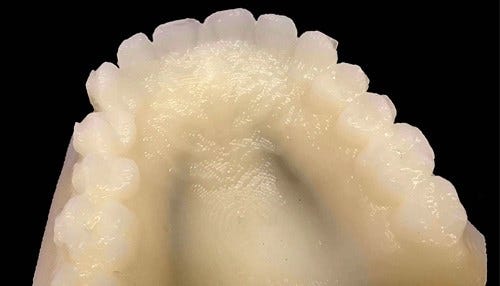Starfish Engineering Aims to Improve Oral Surgeries
 The startup says its technology will be most useful for oral surgeries that involve harvesting tissue in the roof of the mouth.
The startup says its technology will be most useful for oral surgeries that involve harvesting tissue in the roof of the mouth.
Subscriber Benefit
As a subscriber you can listen to articles at work, in the car, or while you work out. Subscribe NowOral surgeries likely aren’t top of mind as risky operations, but there’s a critical artery in the roof of the mouth—invisible to the naked eye—that gives surgeons pause; cutting it can cause hemorrhaging, among other complications. Understandably, surgeons often avoid the area altogether, but a patient’s unique anatomy means the greater palatine artery may be in a slightly different place than expected. A Purdue University-affiliated startup has invented an imaging method it says will give surgeons, for the first time, a real-time visual during surgery of the exact location of the patient’s greater palatine artery.
Founded in 2016, West Lafayette-based Starfish Engineering LLC says the greater palatine artery is also intertwined with the greater palatine nerve, which opens the door to other potential complications.
“If you cut the greater palatine artery, not only will you have hemorrhaging—which is difficult to stop in certain circumstances—you’ve also severely damaged this large nerve in the roof of the mouth,” says Starfish Engineering Chief Executive Officer Brian Bentz. “And this complication can lead to a loss of feeling in parts of the mouth that can be permanent.”
Starfish Engineering says, typically, surgeons’ only guide for avoiding the artery is their knowledge of the mouth’s anatomy and the artery’s typical location. But Bentz notes the certainty of its location is still an active question in research. Recent work determines its location within four to five millimeters, which leaves room for discrepancies. Surgeons can use ultrasounds or X-rays, but Bentz says they’re expensive and difficult to implement.
Starfish Engineering believes its optical imaging technology can pinpoint the artery’s exact location. It’s comprised of two key parts: software and an imaging device. The device shines a bright LED light at the roof of the mouth, and Bentz says a camera-like system captures an image of the light that comes back.
“We focus on how much light is absorbed in the different tissues: the artery and the background tissue,” says Bentz. “A bright light source shines light into the roof of the mouth, and the light that interacts with the artery will be absorbed more than the light that interacts with the background tissue.”
That information is plugged into an algorithm, which determines the exact location of the greater palatine artery. Bentz says Starfish’s technology is best summarized as “a portable and inexpensive optical imaging device.”
Bentz notes Starfish’s method could be used in real-time during surgery. While the technology can locate the artery, the startup is deciding how to deliver that information.
“Once we determine the location of the artery, how do we give that information to a surgeon to help them during the surgery? It’s only so helpful to have just a picture of it on a screen, for example,” says Bentz. “The idea is to use a 3D printing technology to print a surgical guide—essentially, a device that would fasten onto the patient’s mouth and cover the area directly above the greater palatine artery. That’d be useful for surgical planning and for avoiding that area during surgery.”
Starfish has partnered with an oral surgeon to develop its technology. The startup believes its method will be most useful for oral surgeries that involve harvesting tissue in the roof of the mouth.
“The amount of tissue you can harvest for surgery is limited by how well you know location of these arteries,” says Bentz. “If you know their exact location at a one-millimeter depth below the roof of the mouth, you can essentially harvest more tissue to use during the surgery and reduce the need for follow-up surgeries.”
Starfish is seeking a federal grant to further develop its prototype, so it can begin human testing. The startup has worked with the Purdue Foundry and is pursuing collaborations with other companies.
Starfish is also seeking additional funding to uncover other applications for its technology, which Bentz says could address “the general problem of how do you find arteries in tissue.” But the company is making the mouth its first mission—helping surgeons hunt down the critical, but notoriously elusive, greater palatine artery.
Bentz says Starfish’s technology is less expensive and easier to implement than current imaging methods.
Bentz says the startup is determining what information is most useful for specific surgeries.
